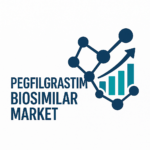Market Key Developments and Innovations
The global pluripotent stem cell culture medium market has witnessed significant advancements in materials, technologies, and production processes. A key development is the transition toward xeno-free and chemically defined media formulations. These advanced media types eliminate animal-derived components, reducing variability and the risk of contamination, and enabling higher reproducibility in clinical and research applications. Humanized or recombinant proteins are increasingly being used to replace animal-sourced growth factors and supplements, improving safety and regulatory compliance.
Technological innovations have also enhanced the efficiency and performance of culture media. Automated bioreactors and microfluidic systems now allow precise control of the culture environment, including temperature, pH, oxygen, and nutrient levels. These systems support large-scale expansion of pluripotent stem cells while maintaining their undifferentiated state and pluripotency. Moreover, advancements in omics technologies such as genomics, proteomics, and metabolomics are being integrated into media development to better understand stem cell behavior and optimize formulations accordingly.
On the production side, manufacturers are investing in scalable, GMP-compliant (Good Manufacturing Practices) facilities to meet the growing demand for clinical-grade stem cell culture media. Advanced filtration and sterilization techniques are employed to ensure high purity and batch-to-batch consistency. Custom media formulation services are also gaining traction, allowing researchers to tailor media compositions to specific stem cell lines or differentiation protocols. Collectively, these innovations are driving improvements in the safety, scalability, and functionality of pluripotent stem cell culture media, accelerating progress in regenerative medicine, drug discovery, and cell therapy development.
Market Trends
The global pluripotent stem cell culture medium market is characterized by evolving trends shaped by advancements in biotechnology, regulatory demands, and the growing applications of stem cells in research and clinical therapies. One major trend is the increasing use of defined and xeno-free culture media in both research and clinical settings. These formulations offer enhanced reproducibility and compliance with regulatory standards, making them suitable for therapeutic applications.
Another important trend is the rising adoption of 3D culture systems and organoid models, which require specialized culture media capable of supporting complex cellular interactions and structures. This has led to the development of media tailored for 3D pluripotent stem cell cultures, facilitating more physiologically relevant research outcomes. Additionally, there’s growing interest in media formulations that support the efficient reprogramming of somatic cells into induced pluripotent stem cells (iPSCs), contributing to personalized medicine and disease modeling.
Automation and high-throughput screening are also influencing market trends. The demand for culture media compatible with robotic platforms and automated cell culture systems is increasing, particularly in large-scale drug discovery and toxicity testing. Furthermore, as stem cell therapies move closer to clinical and commercial deployment, media that comply with GMP and regulatory standards are gaining prominence.
Regionally, North America and Europe continue to lead the market due to strong investment in biotech research, while Asia-Pacific is emerging as a fast-growing segment driven by government funding and expanding healthcare infrastructure. These trends highlight the market’s evolution toward safety, scalability, and innovation to meet the demands of next-generation stem cell research and therapies.
Market Dynamics
The global pluripotent stem cell culture medium market is shaped by a dynamic set of drivers, challenges, and opportunities. A key market driver is the growing investment in stem cell research, regenerative medicine, and personalized therapies. Pluripotent stem cells—both embryonic and induced—are essential in understanding disease mechanisms, developing cell-based therapies, and testing pharmaceuticals. This growing demand is driving the need for high-quality, reproducible, and scalable culture media solutions.
Another important driver is the increasing number of clinical trials and therapeutic developments involving pluripotent stem cells. The progression of stem cell-based treatments into later-stage clinical trials, especially for neurodegenerative, cardiovascular, and autoimmune disorders, is fueling demand for GMP-compliant, chemically defined media. Regulatory agencies worldwide are also encouraging the use of xeno-free formulations, prompting a shift in production and development strategies.
However, the market faces several challenges. High costs of specialized culture media, especially for GMP-grade products, can be a barrier for smaller research institutions. Additionally, the complexity of maintaining stem cell pluripotency and avoiding spontaneous differentiation remains a technical challenge. Batch-to-batch variability and stringent quality control requirements further complicate media development and manufacturing.
Despite these obstacles, significant opportunities exist. Advancements in cell culture automation, artificial intelligence in media optimization, and partnerships between academic institutions and biopharmaceutical companies are expected to drive innovation. Emerging economies in Asia and Latin America offer untapped potential due to expanding research capabilities and supportive regulatory frameworks. As regenerative medicine and stem cell therapy continue to advance, the demand for robust, scalable, and compliant stem cell culture media will continue to grow steadily.
